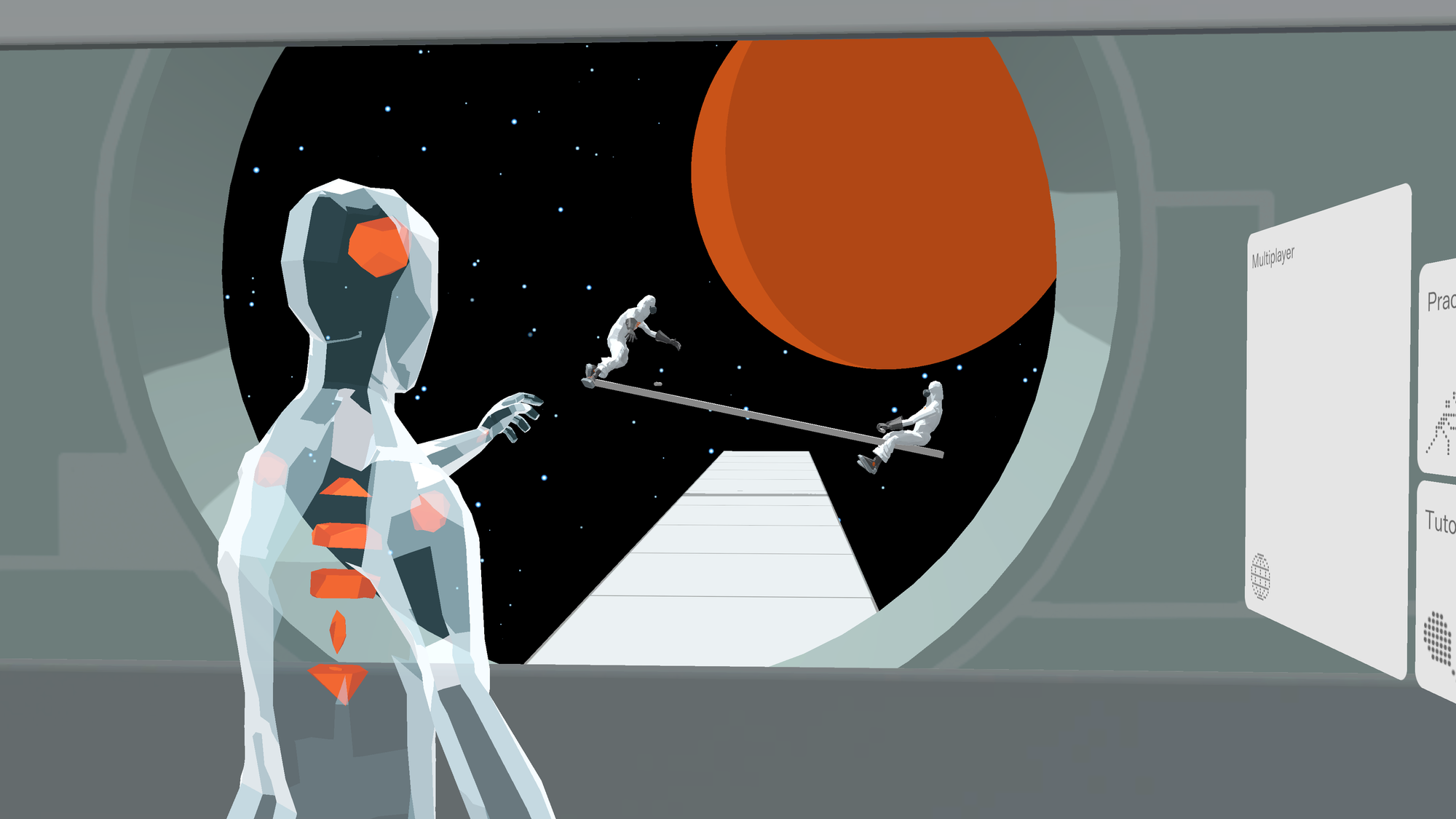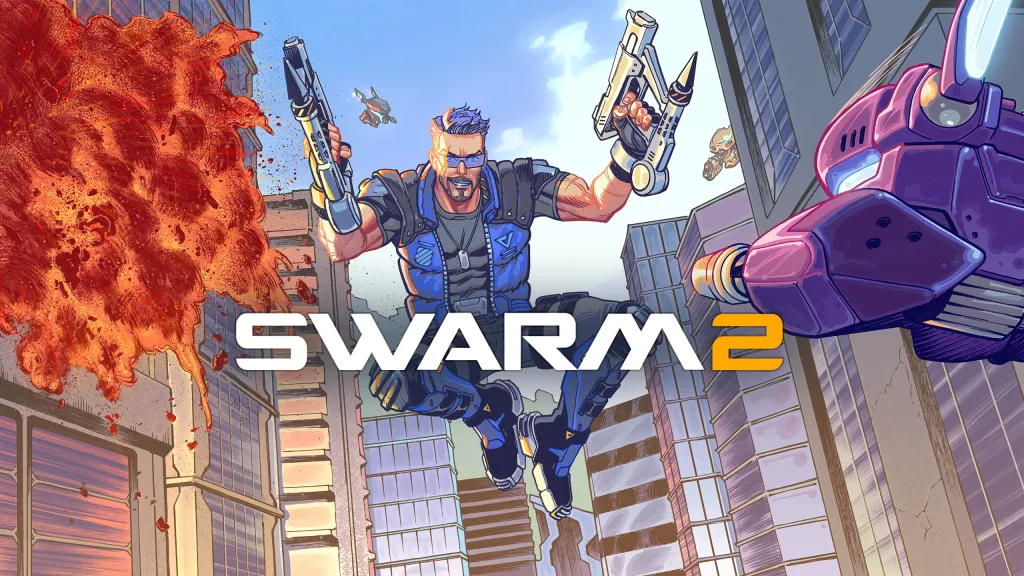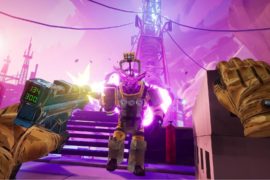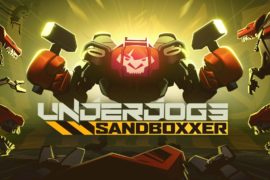Following last year’s PSVR 2 launch, C-Smash VRS remains a stylish remake for a SEGA arcade classic on Quest & Pico. Our full review:
Cosmic Smash makes for an unlikely reboot candidate but, two decades on, C-Smash VRS stylishly adapts this arcade classic.
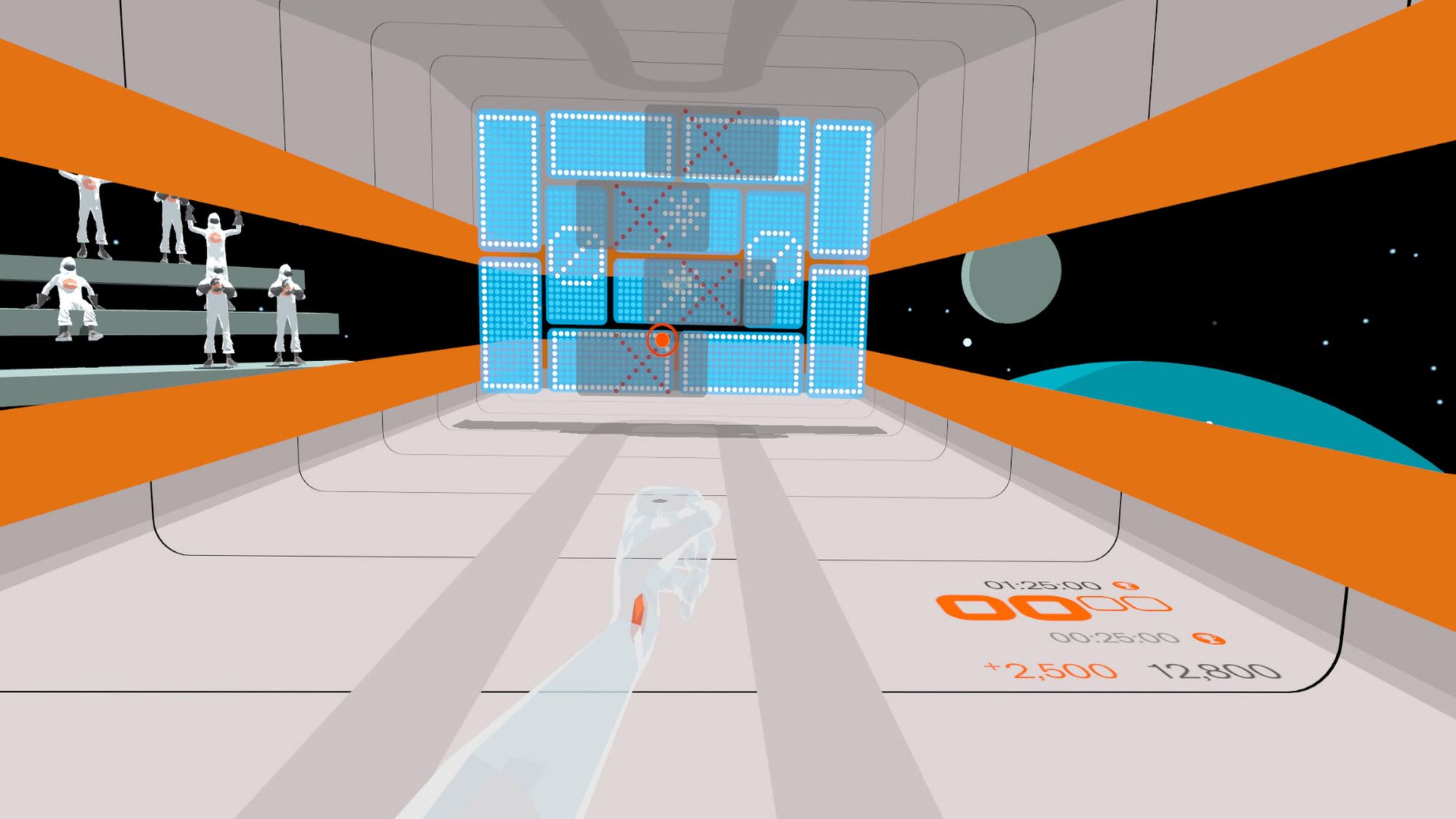
Ever since modern VR’s early days, there’s been a steady slate of Dreamcast adaptations. Rez Infinite set a high bar early on, later followed by Space Channel 5, while Samba De Amigo: Virtual Party is based on the sequel. Then we have C-Smash VRS, which opts for a full remake. Arguably one of SEGA’s most obscure games, I’m still surprised but personally thrilled that Cosmic Smash is getting a second chance.
Mixing Squash and Breakout with a first-person perspective, C-Smash VRS involves hitting colored pads across this space station. Call the ball toward you through a pulling motion, use your other controller as a racket, move left and right with the analog stick, and serve. It’s an intuitive control system that feels effortless to learn, helped by a responsive physics system. Though there isn’t tremendous gameplay depth, that’s key to C-Smash VRS’ arcade-like charm.
Following a brief tutorial, C-Smash VRS opens up online multiplayer and a solo ‘Journey.’ The latter sets up a quick campaign across five planetary orbits with two difficulty options. Zen Mode lets you restart stages if you don’t succeed, while failing in Challenge Mode means a complete restart. Choose one of several potential routes around this planet, each with different stages, and begin your journey.
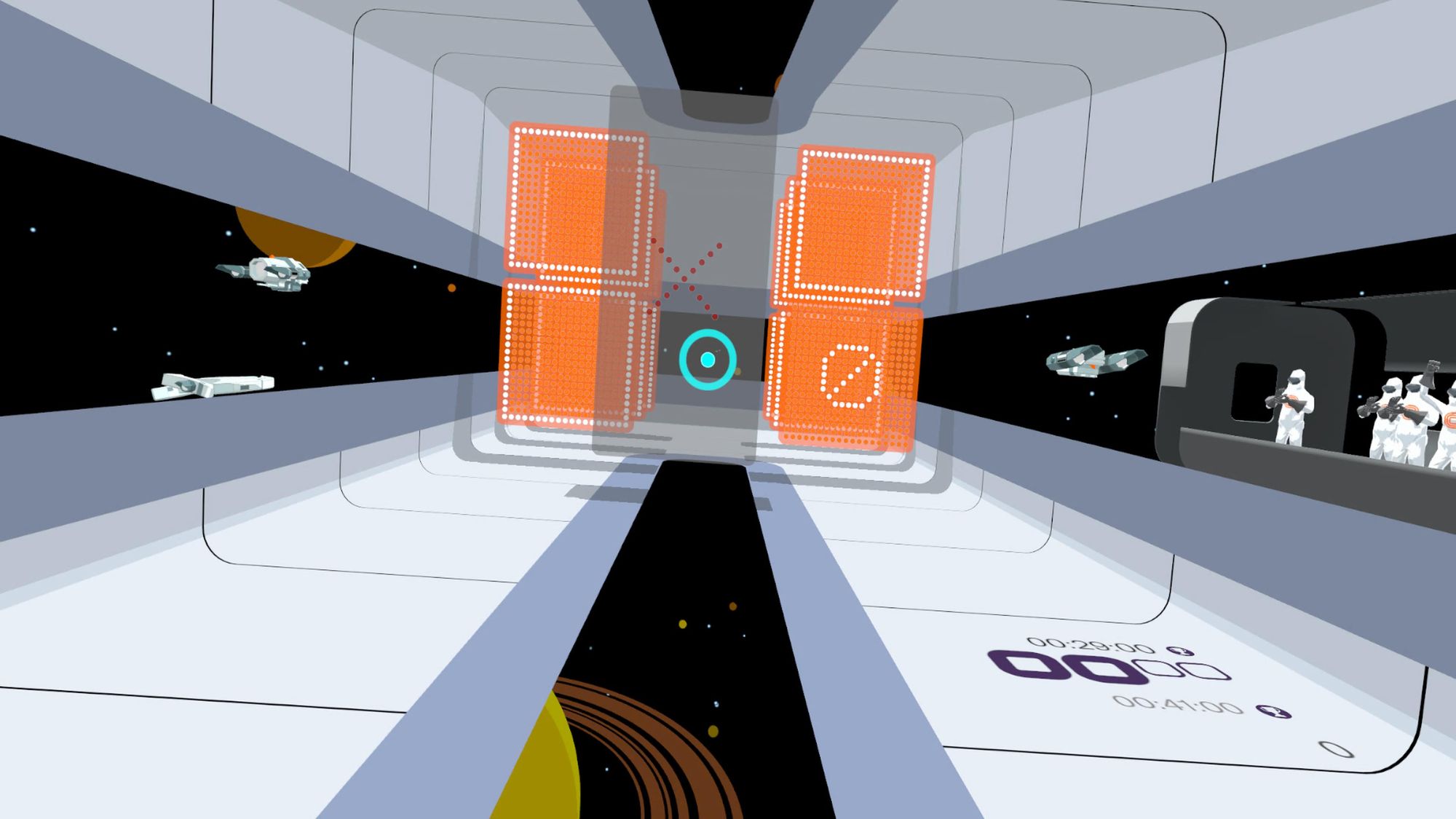
Each stage primarily assesses your performance based on speed, ranking you from ‘D’ to ‘A.’ Your goal to hit every panel stays the same, but each stage presents different challenges. Some panels require multiple hits, while others move position or have special abilities, like destroying every panel in a horizontal line. Indestructible gray tiles often block your path, forcing a different approach. Like Squash, the ball bounces back toward you and play doesn’t stop until each tile is gone; there’s no penalty for missing shots beyond losing time.
C-Smash VRS effectively uses PSVR 2 haptics and hitting the ball adds a subtle controller vibration that complements the racket swing. Repeat hits slowly charge your ‘Power Smash,’ which comes in several forms during Journey. One ability lets you power through multiple panels simultaneously, while another holds the ball atop your racket for precise aiming. Adaptive triggers also create a satisfying resistance when activating this ability. You’ve still got that controller vibration feedback on Quest when hitting shots, though the Touch Controllers’ lack of support for adaptive triggers means this doesn’t feel quite as good.
Jumping into stages or online matches feels straightforward, and the ranking system adds considerable replayability. Every time I got a C rank, I tried again to hit A rank. C-Smash VRS is well suited for quick play, helped by an energetic retro-futuristic soundtrack and appealingly colorful presentation that looks great on both Quest 3 and PSVR 2. I quickly found my rhythm, and while I wasn’t constantly moving my feet, the arm swinging had me sweating.
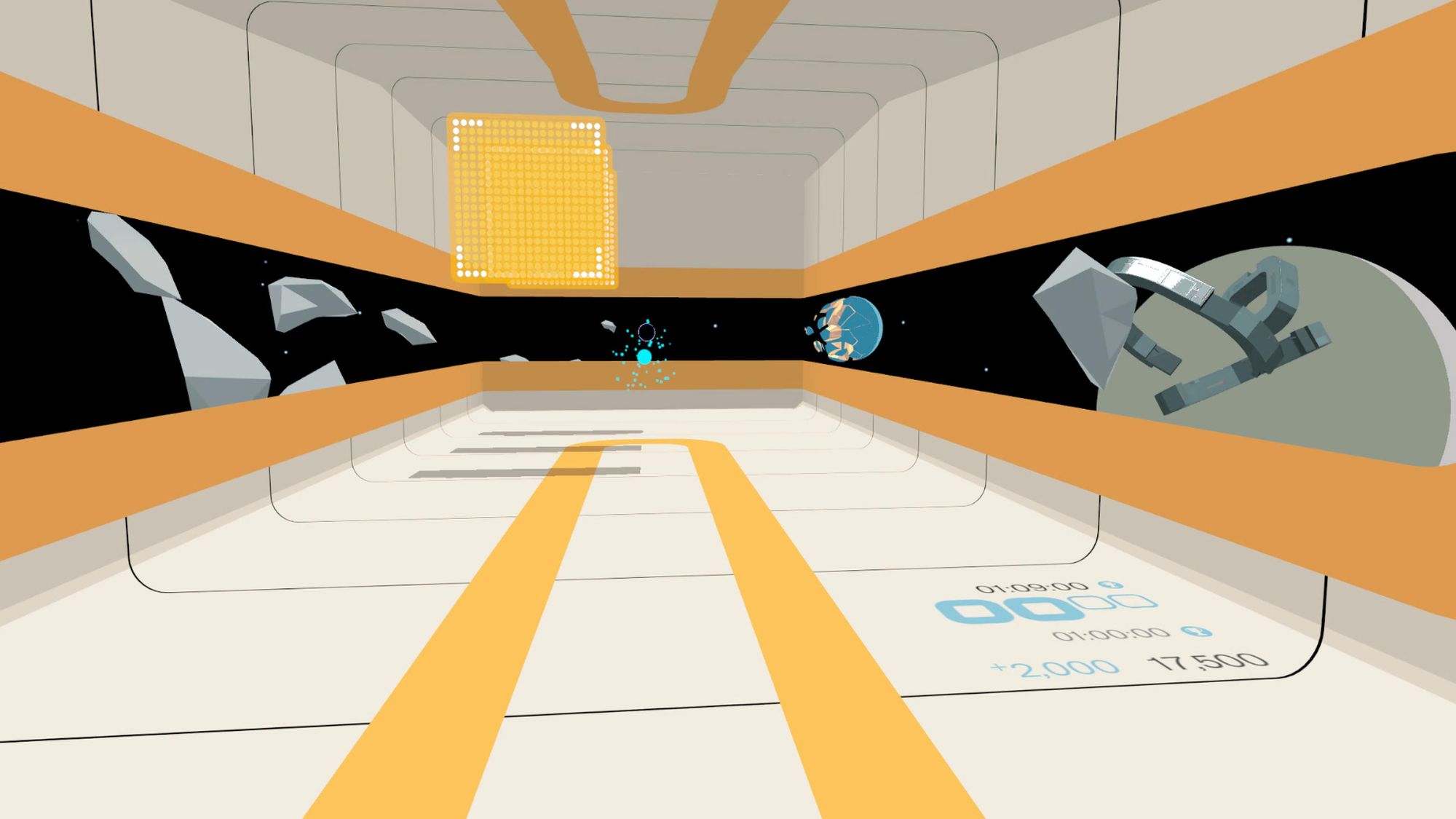
It’s a simple, well-executed idea and I’m pleased to see one of my main gameplay gripes at launch have since been addressed. When pausing during Journey stages, you previously couldn’t retry stages without waiting for the timer to run out. Zen Mode now lets you restart anytime.
Regarding versus play, C-Smash VRS features four different multiplayer modes with decent variety. ‘Head-to-Head” sees who can hit the most panels, ‘Firewall’ involves tagging and holding zones by switching them to accumulate points, and ‘Bodyshot’ uses narrow stages and you must directly hit your opponent. Finally, ‘Quickshot’ uses growing blocks and you score more points for hitting them when they’re smaller. If no one’s about, a training room appears to help pass the time while matchmaking occurs.
C-Smash VRS – Comfort
C-Smash VRS only allows moving left or right across stages, either with teleportation or artificial locomotion. Blinkers add a vignette with a slider for adjustable strength. You can choose your dominant hand and adjust the racket angle. On PSVR 2, Sense Controller and headset vibrations can also be switched off in-game or through the PS5 settings menu. The game’s physicality can also turn this into a workout, and I was sweating throughout.
I previously said C-Smash VRS could be the multiplayer game PSVR 2 needs, and after reviewing the full release, I stand by that sentiment. Presently, I’ve been unable to test the Quest version’s multiplayer, though I previously tried it on PSVR 2. Back then, I played four multiplayer modes with another reviewer, which led to some competitive matches that quickly became a personal highlight.
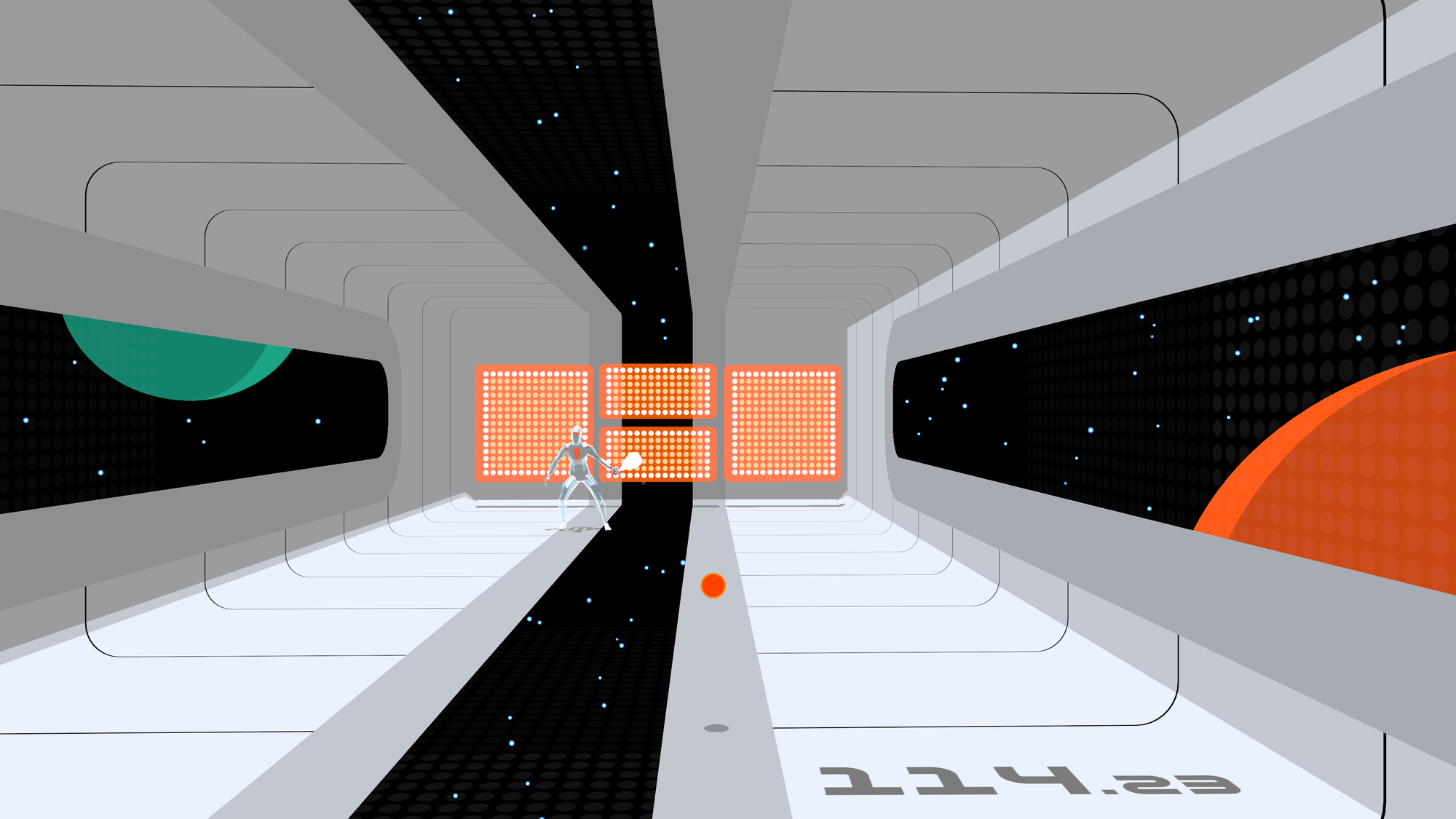
I’m pleased to see how much C-Smash VRS has expanded since last year’s launch, too. Infinity Mode is a great addition that offers a dynamically generated arena with co-op support also available; AI opponents mean you can now practice these modes offline, and 36 new levels mean there are even more Journey stages to try. It’s a more complete experience and the studio isn’t done yet. What’s particularly interesting is the enjoyable practice stage teaser with music from UNKLE, and the publisher says it has “big plans” to come.
C-Smash VRS Review – Final Verdict
RapidEyeMovers and Wolf & Wood have done Cosmic Smash justice with this VR reimagining and I found C-Smash VRS successfully tapping into that “one more game” mindset. While Journey isn’t a long campaign and the arcade-style gameplay lacks significant depth, there’s strength in its simplicity that makes it an easy recommendation.
Boosted by a strong multiplayer component, slick presentation and big post-launch updates since last year, C-Smash VRS has transitioned from PSVR 2 to Quest extremely well. It’s a fine remake of an arcade classic that feels better than ever in standalone VR.
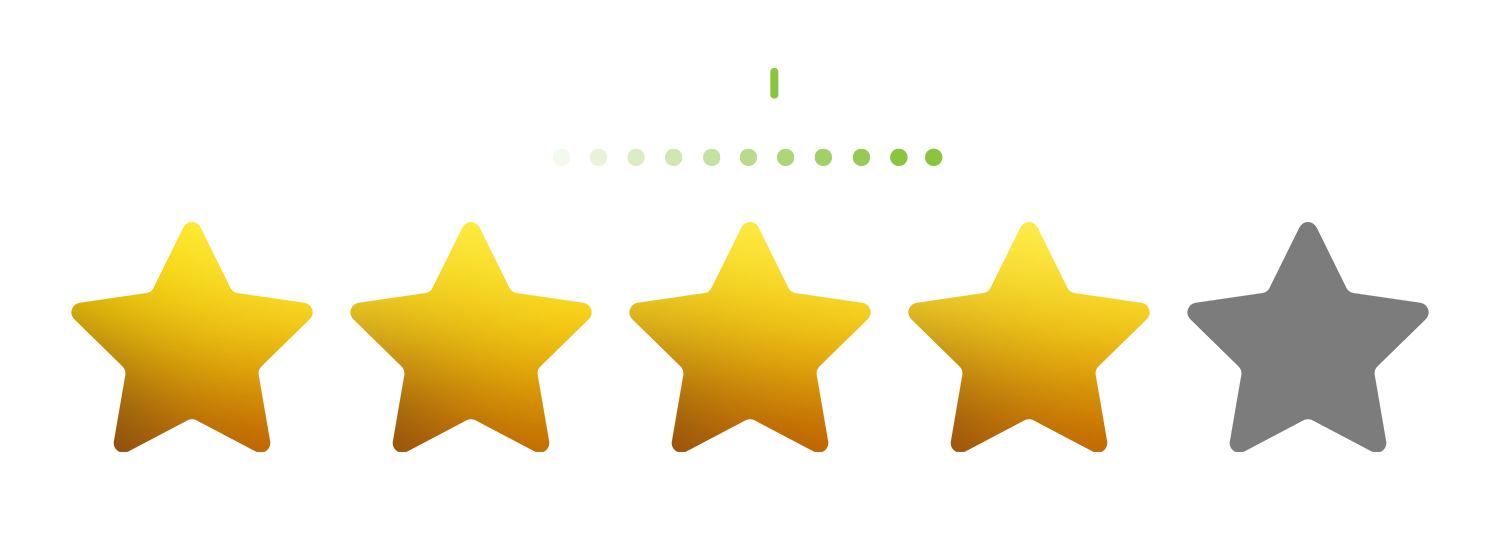
UploadVR uses a 5-Star rating system for our game reviews – you can read a breakdown of each star rating in our review guidelines.
Notice: This review was initially published on June 22, 2023, when C-Smash VRS first launched on PSVR 2, awarding it a “recommended” under our old review guidelines. We updated this review on April 3, 2024, to reflect the Quest and Pico editions’ launch and post-launch changes, updating the scoring to match our current review guidelines.
